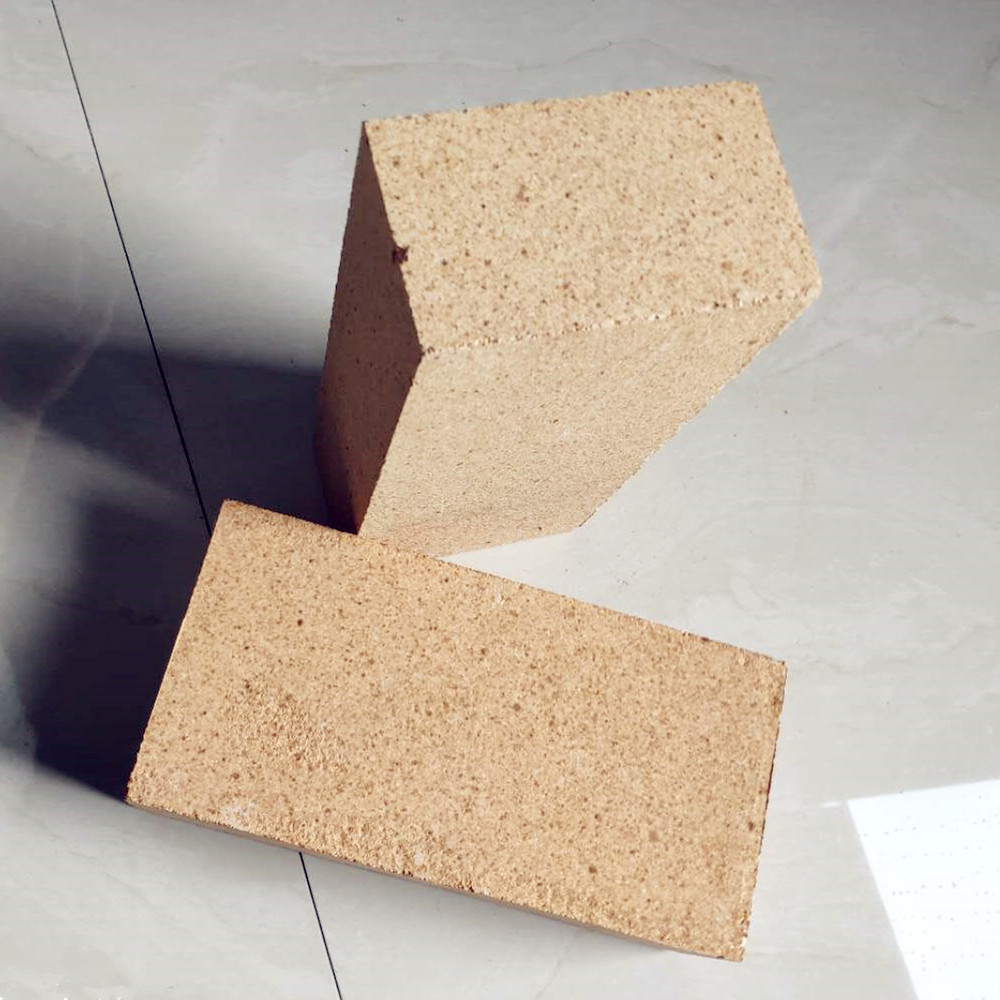Clay fire bricks products
Jan 07, 2022
Clay fire bricks refer to fire clay bricks with an alumina content of 48%-33%. The product is cheap and widely used such as fire clay brick for steel industry. t3 refers to the size model of standard bricks and general fire bricks.
The content of clay bricks is 33%-48%, and the rest is mainly SiO2 and a small amount of impurities. The clay bricks are made from unburned and burnt (clinker) clay crushed, molded and burned. Its refractoriness is very high, but its softening point under load is low. Clay bricks have good resistance to rapid cold and heat, and are mostly used for bricklaying at locations where the temperature changes sharply. Clinker clay bricks are used as lamp holder fire bricks, rising pipe lining fire bricks, etc. The thermal conductivity and mechanical strength of clay bricks are worse than that of siliceous fire bricks. Modern coke ovens are only used in low temperature and temperature-changing parts.
The total expansion of clay bricks heated to 1100°C is small and uniform, but residual shrinkage occurs when heated to 1200°C. This is due to the continuous recrystallization of minerals in fire bricks and the gradual melting of low-melting compounds at high temperatures, resulting in solid particles Due to being close to each other. The shrinkage is related to the composition of the ingredients and the firing temperature.
Clay fire bricks are fire products made from fire clay. It is widely used in industry. Clay bricks are divided into ordinary clay bricks, multi-clinker clay bricks, raw material clay bricks and high-silica clay bricks.
The content of clay bricks is 33%-48%, and the rest is mainly SiO2 and a small amount of impurities. The clay bricks are made from unburned and burnt (clinker) clay crushed, molded and burned. Its refractoriness is very high, but its softening point under load is low. Clay bricks have good resistance to rapid cold and heat, and are mostly used for bricklaying at locations where the temperature changes sharply. Clinker clay bricks are used as lamp holder fire bricks, rising pipe lining fire bricks, etc. The thermal conductivity and mechanical strength of clay bricks are worse than that of siliceous fire bricks. Modern coke ovens are only used in low temperature and temperature-changing parts.

Clay brick temperature changes
The total expansion of clay bricks heated to 1100°C is small and uniform, but residual shrinkage occurs when heated to 1200°C. This is due to the continuous recrystallization of minerals in fire bricks and the gradual melting of low-melting compounds at high temperatures, resulting in solid particles Due to being close to each other. The shrinkage is related to the composition of the ingredients and the firing temperature.Clay fire bricks are fire products made from fire clay. It is widely used in industry. Clay bricks are divided into ordinary clay bricks, multi-clinker clay bricks, raw material clay bricks and high-silica clay bricks.
Clay bricks techincial data
Clay bricks are acidic fire materials, and their acidity gradually weakens with the increase of Al2O3 content in the bricks. Its thermal conductivity is the lowest among all fire materials. Although its refractoriness is as high as 1700°C, its softening temperature under load is only about 1300°C. This is a major disadvantage of clay bricks, so it cannot bear the weight and pressure when used at high temperatures. When it is corroded by a large amount of R2O, its softening temperature will further drop to about 1050℃, so it can only be used on the lower part of the pool wall or at a lower temperature at the bottom of the pool. The thermal expansion rate of clay bricks is small among common fire materials. At the same time, due to the small crystals, small pores and uniform distribution of clay bricks, the stress is easily buffered, so the thermal shock resistance is strong in a large range. Checker bricks, flue and fire accessories near the feeder on the daily glass tank furnace at the lower temperature of the regenerator, such as punches, bowls, etc., require good thermal shock resistance, which can give full play to their effects.Relevant information
-

Main properties of magnesium oxide refractory
Performance characteristics of magnesia refractories and other basic refractories Performance characteristics of magnesia refractories and other basic refractories Refractories containing more than 80% ... -

What properties of lightweight insulation fire clay bricks can be improved by the addition of kyanite?
Lightweight insulation fire clay bricks are a kind of shaped refractory material with clay as the main raw material, which is processed, shaped, dried, and calcined with clay. on the kiln. Due to the r ... -

How is the effect of white fused alumina abrasive used in refractory materials?
After mixing, forming, drying, and firing at high temperature in a shuttle kiln. The product has the characteristics of high refractoriness, good thermal shock stability of white corundum, high high te ... -

Characteristics of refractory magnesia chrome bricks for lime kiln
Lime kilns are mainly classified into square kilns and circular kilns. According to the classification of fired products, they can be divided into lime kilns, ceramic kilns, cement kilns, glass kilns, ...

